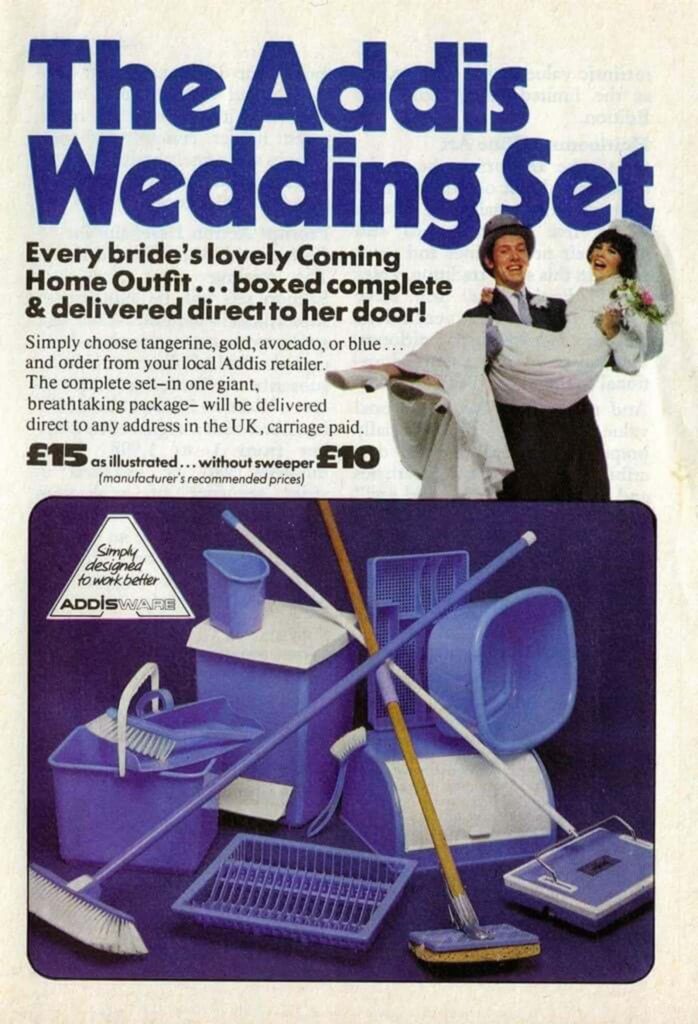Where will the gender minefield in advertising end?
A TV ad for Gorilla Glue just got hauled up in the front of the Advertising Standards Authority (ASA). The reason? ‘Perpetuating harmful gender stereotypes’ all because it shows a father roughhousing with his sons, breaking a few ornaments, and then fixing them with Gorilla Glue so ‘mum stays none the wiser’. The ‘harmful’ inference is Mum is seen as the responsible, serious little homemaker who is overly concerned with tidiness, while dads are just all about the fun.
Thankfully, the ASA saw sense and didn’t uphold the complaint. As Gorilla Glue put it,
“the ad simply depicted a real-world example of a game between a parent and their children, with the gender of that parent being inconsequential…. there was nothing in the ad to suggest that the mother was concerned about tidiness, and, as she was not present in the ad, there was no evidence that she was not playful with her children.”
And we say thankfully, as once again this feels like wokeness gone mad. The ad was just showing a typical family, nothing more, nothing less, and yet it was accused of gender stereotyping. But if people are going to take exception over something so innocuous, what does this mean for portraying gender in advertising? We take a look.
The gender minefield
Back in the dim and distance past, gender stereotypes were sadly a mainstay of advertising as these ads for cars, washing machines and this fantastic Addis Wedding set(!) all illustrate.

And although we say dim and distance past, these ads from Levis, Lynx and McCoys show these tired stereotypes were still alive and kicking in the 1990s and 2000s.
So, it was a bit of a milestone in 2019 when the ASA introduced a ban on adverts perpetuating harmful gender stereotypes. The ban followed a review which found evidence that gender stereotyping can restrict people’s choices, aspirations and opportunities and that advertising plays a part in unequal gender outcomes.
Since then a number of ads have been banned including ones from Philadelphia, PC Specialist and the Government, an indication perhaps of how ingrained stereotypes become.
But while these ads definitely demonstrate stereotypical tendencies (men are useless with children; only men like tech; and women do all the housework while men lounge around), does the Gorilla Glue ad really fall into the same category?
Isn’t in simply showing a real-world example of an average family messing around? Should it have been a mother horsing around with the kids? But then wouldn’t the complaint have been the use of the ‘absent father always working long hours’ stereotype? And if this ad is really perpetrating harmful gender stereotypes, where do we draw the line?
The latest hard-hitting Dove ad tackling the impact of social media on children’s mental health, features a girl suffering from an eating disorder. Isn’t that a stereotype? Shouldn’t it be a boy given research suggests around 25% of those affected by an eating disorder are male?
But if you take Dove to task for ‘perpetuating harmful gender stereotypes’, then quite frankly you are missing the point, as Dove is doing something that all good advertising should do – appealing to their key demographic. The simple reason it doesn’t feature any boys is because their main target audience is 18 to 35 year old women.
In fact, PC Specialist’s response to the ASA was that the vast majority of its customers are male and so it didn’t feel the ad was particularly offensive. And when you look at it in that light, it isn’t.
So, these advertisers aren’t guilty of using gender stereotypes, but rather of trying to ensure their advertising appeals to their target audience. And if that is the case, then maybe the real issue with the Gorilla Glue ad is the inference only a man is capable of using their glue, as fixing things is what men do! And let’s not even go down the real-world or average family rabbit-hole, as what is classed as real-world or average nowadays? We said it was a minefield!
So, can advertising ever get it right?
Stereotypes exist for a reason, so the reality is most of what we see in adverts could be deemed as being stereotypical: the stroppy teenager, mostly women shopping online, men being made fools of by women.
But as we have mentioned before, it’s when these stereotypes are oversimplified and used lazily that the problem really starts. Match.com, we’re looking at you!
And of course, it’s right and proper advertisers are held to account and that consumers can call out something they deem to be offensive or harmful. But based on the complaint about the Gorilla Glue ad (and it was just one) can advertisers ever please everyone where gender is concerned? Probably not, especially since gender isn’t just about male and female, but also about trans, non-binary and gender diverse. There are even reports children are allegedly identifying as cats, horses and dinosaurs.
So, how does this impact on advertising? Should advertisers show one of each to satisfy everyone all without showing them in a stereotypical way? Should advertisers stick to using brand mascots, such as Compare the Market, or animals like Virgin Media to avoid the whole gender issue (although if people are identifying as animals, this raises its own unique set of problems!). Or should advertisers just accept that there will always be somebody who will be triggered by something they do?
It feels very much like advertisers are increasingly between a rock and a hard place, but we actually think the answer is a lot simpler than trying to skirt around the issue or placate the masses. You just have to remember what defines good advertising.
What does this mean for the future?
Good advertising is about reaching your potential customers, capturing their attention, and enticing them to use your product or service. And part of that is ensuring the people in your ads represent your target audience. Dove are spot on for not using boys in their ads, just as PC Specialist were for using just men. And if you make the mistake of starting to try to appeal to everyone and embark on a box ticking exercise then your advertising will not only fail, but also annoy your core demographic and impact your bottom-line, as the Bud Light controversy beautifully demonstrates.
And while we’re not denigrating people for being woke, as ultimately raising awareness around social injustice and discrimination is how society learns and evolves, there is a sense that some people can be a touch over-sensitive. Advertisers need to be aware of this and be prepared, like Gorilla Glue, to have a clear rationale for what they did and why.
But if you stick to your core values, focus on building long-term relationships with your key customers, and don’t shy away from showing your core demographic, hopefully, you shouldn’t go far wrong.
